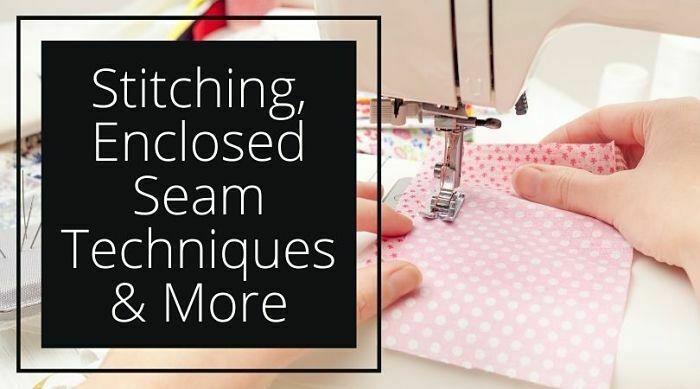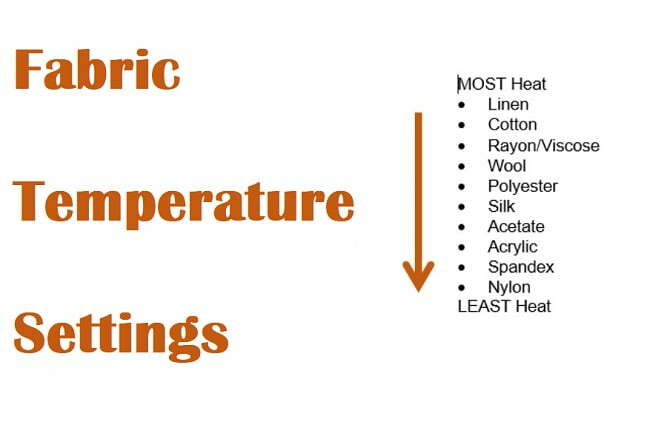Learn all about stitching, enclosed seam techniques, specialty threads, and and more. Plus the many types of sleeves and zippers.
Stitching Techniques
- Dart: The goal is to sew a dart with a point that is as smooth as possible. Stitch from the wide end to the tip, do not back stitch at the point.
- Ease stitching: There are three ways to ease a seam: (1) gather before sewing the seam, (2) stretch the shorter seam as you sew the unequal layers together, or (3) let the machine ease the longer edge as the layers move under the presser foot.
- Gather: Tiny, soft folds of fabric that form when a larger piece of fabric is sewn to smaller piece. The fabric should determine the best method of gathering to use. The goal is to create small, evenly spaced folds of fabric along the gathered area. There are four basic ways to gather: (1) rows of basting stitches, (2) machine couch a cord, (3) use a ruffler attachment or gathering foot, and (4) zigzag over clear elastic.
- Pleat: All pleats involve folding fabric, and each folding strategy produces a different type of pleat (e.g., knife pleat, box pleat, inverted pleat).
- Tuck: A stitched fold of fabric that is usually decorative, but can also be used to add shape to a garment; formed so that the fold and stitching show on the right side of the fabric.
- Topstitching: A row of evenly spaced straight stitches visible on the right side of a garment; usually aligned parallel to an edge or a seam. Typical distance is 1/4” to 3/8”; however, it usually is a matter of taste.
- Understitching: A technique when seam allowances are sewn to a fabric layer to help keep the fabric from rolling to the right side of the garment; invisible from the right side of the garment. Grade and clip seam allowances before understitching. Press seam allowances toward the facing.
- Stitch in the ditch: Refers to machine stitching that is sewn in the “ditch” of a seam so that it sinks into the seam and stays out of sight.
- Stay stitching: A row of permanent, straight stitches sewn on a single layer to prevent stretching in key areas when you’re handling the garment during the construction process. The stitching should be done just inside the seam allowance (1/2” from the cut edge if seam allowances are 5/8”). No back stitch is necessary.
- Hem: The finished edge on the bottom of a garment.
Specialty Threads
- Quilting: A strong cotton thread with a waxy coating to prevent tangling when used in hand-quilting. It is not appropriate for use in sewing machine.
- Heavy duty: Slightly heavier than all-purpose thread; to be used for prominent top-stitching.
- Embroidery: Decorative thread offered in a wide variety of vibrant colors. Silky, lustrous, and versatile, it is weaker than regular sewing thread and should not be used for construction. It is used for decorative stitches.
- Metallic: Add glitter and they are durable. All-purpose thread should be used on the bobbin; use metallic in upper looper on a serger.
- Elastic: Used for stretch shirring; usually wound by hand onto the bobbin. The bobbin tension must be adjusted when using this type of thread.
Techniques for Enclosed Seams
Clipping and notching a seam allowance make them more flexible. Clip a concave (inside) curve within 1/8” of the stitching so the seam allowance outer edge can spread when turned back to release tension of the seam. Notch a convex (outside) curve by clipping away V-shaped wedges from the seam allowance to remove bulk. Trimming refers to reducing any seam allowance wide. Grading is more specific and is done on enclosed seams where the layered seam allowances create excess bulk. Trimming is done on collars, lapels, facings, and underarms. To grade a seam allowance, trim the side closest to the outer portion of the garment to 1/8”-3/16”, then trim the other allowance 1/4”-3/8”.
Types of Sleeves
- Bell Sleeves are a narrow shape to the shoulder and the cuff hem is flared.
- Bishop sleeves are full length, fitted near the elbow, and then open up as they move down to the wrist with a cuff at the end with buttons.
- Cuffed sleeves taper just a little towards the cuff.
- Kimono sleeves are wide, long, and loose and inspired by the Japanese Kimono.
- Off shoulder sleeves are open, bare, and start a little below the shoulder bone.
- Raglan sleeves (two-piece and one-piece) join the bodice in a diagonal seam that extends from the neckline to the side seam.
- Set-in sleeves are joined to the garment bodice at a seam that circles over the shoulder and under the arm. A well set-in sleeve meets at the shoulder in a pucker-free, smooth, curved seam. Two methods of construction: closed/round method and open/flat method.
- Tulip sleeves have a little give and they don’t cut straight across the arm.
Types of Zippers
- Centered zippers are found on a variety of garments, including dresses, skirts and pants. Centered zippers align the seam over the zipper teeth and the zipper tape is covered by symmetrical overlaps on each side. Parallel lines of topstitching flank the seam.
- Lapped zippers are sewn to completely hide the zipper under a flap of fabric, and are found in skirts, pants, and center backs of dresses.
- Fly zippers are used in pants. Women’s garments lap right over left, and men’s garments lap left over right.
- Exposed zippers are sewn directly on the outside of the garment. The zipper tape becomes a decorative feature. When installing an exposed zipper, turn the seam allowances to the right side, topstitch the zipper over the seam allowance to cover the fabric edge.
- Invisible zippers, when inserted correctly, are unnoticeable except for the zipper pull. They are incredibly flexible and soft, making them ideal for fine fabrics.
Pressing Tools
- Tailor’s ham: for pressing curved areas of clothing (darts, shoulders, collars, etc.)
- Sleeve board: narrow board for sleeves
- Seam roll: oblong for long, project like sleeves
- Point presser: for narrow, hard-to-reach areas of collars, belts, cuffs, corners and points
- Pressing cloth: prevents scorching/melting of fabric
Fabric Pressing Temperature Settings
Identify and use appropriate temperature settings for various pressing fabrics with different fiber content.


